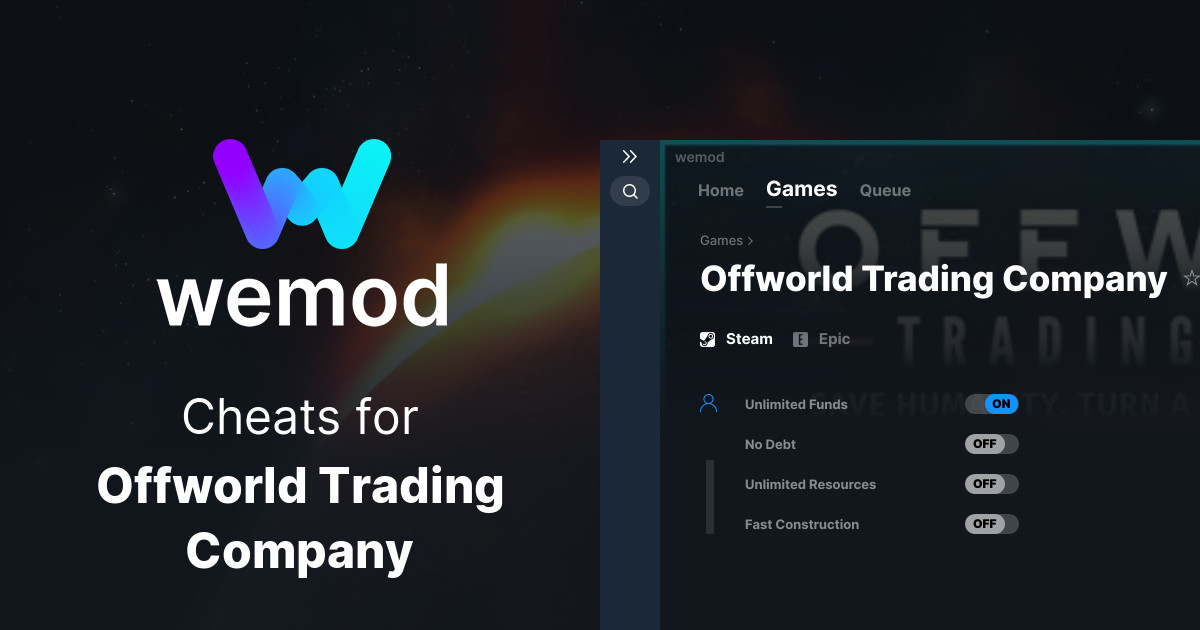


If player can’t produce a resource that they need, the system automatically buy those resources for them, at the cost of debt. One type of ecology in this game is debt. Balancing loops can create the type of effect called “rubberbanding”, used to reduce the gap between the player in a winning position and players on losing positions. A player can also create a resource that another player needs, for example if a Robotic HQ is founded, a player selling electronics early in the game can make a good amount of money when the Robotic HQ is lacking electronics.Įcology Loops are mainly a balancing loop, that tends to a certain balance point. Players have buildings like the Hacker Array to create artificial surplus or shortages, creating a disruption in the use of the resources on the other players. Some resources can suffer surplus or shortages from time to time, decreasing or increasing the resource value respectively. But where Offworld really excels is in the economic interaction between players. Another type of economy is the use of raw resources to create manufactured resources, that are usually more valuable than raw resources and therefore, the player can make more money selling those type of resources.

If is lacking construction resources to buy a new building, the player can use money in order to “buy” those resources (a process that happen automatically in order to reduce the cognitive weight on player’s mind). The main tool for the player to act in the game is money, which is obtained by selling resources and buying other players’ shares.

Obviously, Offworld as an economic simulation RTS game, consist mostly of economic loops. Also, the player can buy other players’ shares, that periodically provide money for the player, conforming another type of boosting engine.Įconomy Loops consist mainly of a reinforcing loop, where the player choose between trade a resource for another or to invest on upgrades to enhance or combine resources, creating a more valuable resource. We have to remember that Offworld have 13 resources, but each HQ type use 3 resources to build new buildings. For example, the construction resources in Offworld Trading Company make up a boosting engine, because the player can use those resources to act in the game (i.e create new buildings) or to create buildings that are sources of those construction resources, increasing the amount of construction resources available to the player. These type of loop creates a resource and give the player two choices inside the loop, one be using the resources to increase the flow of resources from the source or to use the resources acting on the game. In the game we can identify a type of engine called Boosting Engine. This is a topic that is analyzed in deep in the book “Advanced Game Design: A systems approach”, so I will explain the types of gameplay loops that are most relevant to this analysis, but if you want to know more about them I can’t recommend enough the aforementioned book. The first stop will be the gameplay loops. Three types of Gameplay Loops in Offworld Trading Company One of the particularities of this game is that it has 13 resources! At first glance (and at second too, maybe) they seem like a lot of resources, but it’s mitigated with an effective tutorial, a well directed gameplay and also taking into account that resources and building are effectively the player’s units (in the traditional RTS sense), so an average RTS player will have no trouble understanding and using those resources. It’s essentially an economic RTS where players fights against each other buying stocks of other players until they are out of the game. To make a summary of Offworld Trading Company, is an RTS game but unlike many others, it doesn’t has guns, direct combat or anything like that. I turned my head to Offworld Trading Company, a game that is all about managing resources, to analyze how they did it in order to apply this knowledge to future games and create better experiences for players. No trade-offs, no threats and no deep management needed. It was basically a safe space with nothing interesting to do more than constantly gather resources to build more units. Some time after the playtest session I realized that the main problem was the Base, specifically how resources were managed by players and the unexisting amount of disruption that it could suffer on the resource flow. The overall gameplay was judged positively by the testers, but something was missing.
Offworld trading company debt free#
One of my first games created in the RTS genre was Our Planet is Dying, a spaceship-themed game with grid movement in the Space (combat units) and free movement on the Base (resource-gatherer units).


 0 kommentar(er)
0 kommentar(er)
